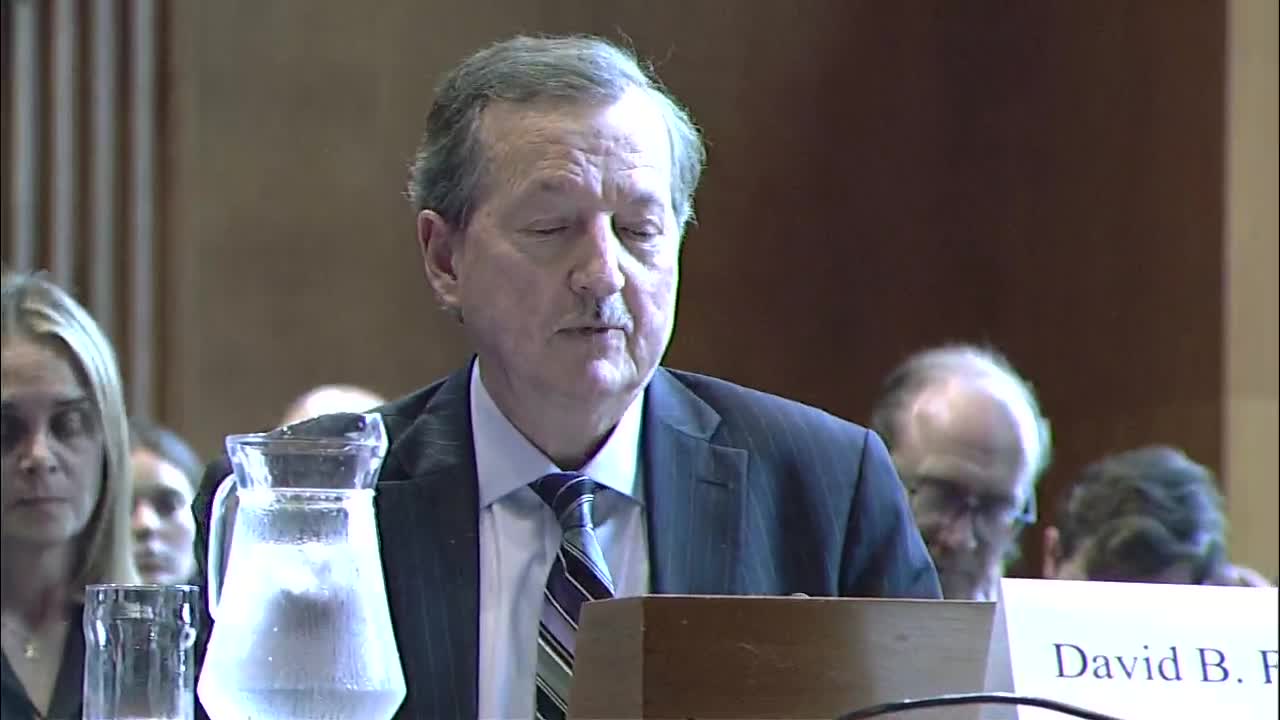EPA Faces Pressure to Reform Chemical Review Process
July 31, 2024 | Environment and Public Works: Senate Committee, Standing Committees - House & Senate, Congressional Hearings Compilation

This article was created by AI summarizing key points discussed. AI makes mistakes, so for full details and context, please refer to the video of the full meeting. Please report any errors so we can fix them. Report an error »

In a recent government hearing, discussions centered on the Environmental Protection Agency's (EPA) new chemicals program and the regulatory challenges surrounding the chemical six PPD, commonly used in tires. The meeting highlighted the critical need for efficient chemical reviews, as current processes often lead to significant delays, sometimes extending to years.
The EPA is mandated by the 2016 revisions to the Toxic Substances Control Act (TSCA) to complete new chemical reviews within 90 to 180 days. However, stakeholders expressed concern that the agency's reviews are not meeting these timelines, which hampers innovation and the development of alternatives to six PPD. The urgency for a replacement is underscored by the potential health and environmental risks associated with the chemical.
The hearing also addressed the TSCA section 21 petition process, which allows organizations like Earthjustice to seek regulatory action against substances like six PPD. While the EPA has acknowledged the need for a rule prohibiting six PPD, the process for granting such petitions lacks the same level of public comment and scientific review as other regulatory actions, raising concerns about transparency and thoroughness.
Moreover, the EPA's recent shift to a \"whole chemical approach\" in risk evaluations has sparked fears that the section 21 process could undermine the more comprehensive section six evaluations. Critics argue that this could divert resources away from essential regulatory obligations, complicating the already challenging landscape of chemical safety oversight.
As the EPA prepares to issue final regulations later this year, stakeholders are hopeful that their feedback will lead to meaningful changes. The discussions at the hearing signal a growing recognition of the need for reform in chemical regulation to better protect public health and the environment while fostering innovation in the chemical industry.
The EPA is mandated by the 2016 revisions to the Toxic Substances Control Act (TSCA) to complete new chemical reviews within 90 to 180 days. However, stakeholders expressed concern that the agency's reviews are not meeting these timelines, which hampers innovation and the development of alternatives to six PPD. The urgency for a replacement is underscored by the potential health and environmental risks associated with the chemical.
The hearing also addressed the TSCA section 21 petition process, which allows organizations like Earthjustice to seek regulatory action against substances like six PPD. While the EPA has acknowledged the need for a rule prohibiting six PPD, the process for granting such petitions lacks the same level of public comment and scientific review as other regulatory actions, raising concerns about transparency and thoroughness.
Moreover, the EPA's recent shift to a \"whole chemical approach\" in risk evaluations has sparked fears that the section 21 process could undermine the more comprehensive section six evaluations. Critics argue that this could divert resources away from essential regulatory obligations, complicating the already challenging landscape of chemical safety oversight.
As the EPA prepares to issue final regulations later this year, stakeholders are hopeful that their feedback will lead to meaningful changes. The discussions at the hearing signal a growing recognition of the need for reform in chemical regulation to better protect public health and the environment while fostering innovation in the chemical industry.
View full meeting
This article is based on a recent meeting—watch the full video and explore the complete transcript for deeper insights into the discussion.
View full meeting